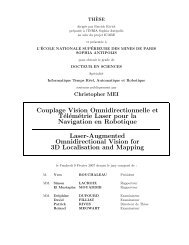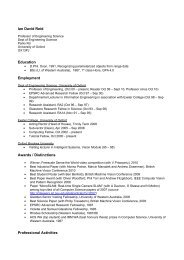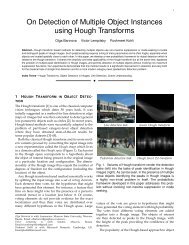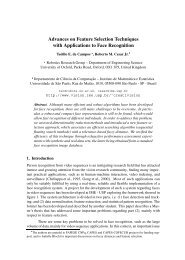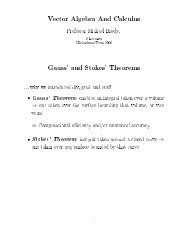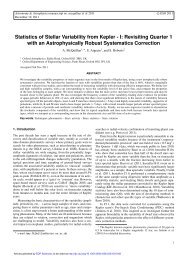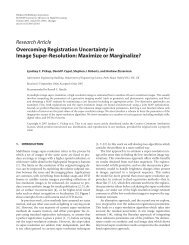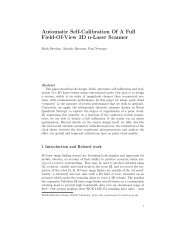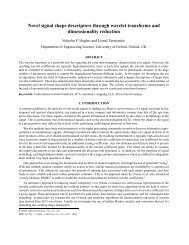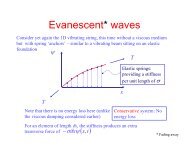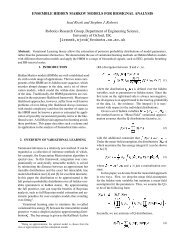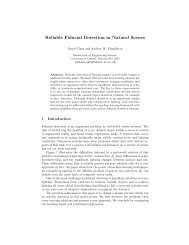Physiological Basis of the Electrocardiogram
Physiological Basis of the Electrocardiogram
Physiological Basis of the Electrocardiogram
Create successful ePaper yourself
Turn your PDF publications into a flip-book with our unique Google optimized e-Paper software.
1.2 The Physical <strong>Basis</strong> <strong>of</strong> Electrocardiography 5<br />
Figure 1.2 The dipole field due to current flow in a myocardial cell at <strong>the</strong> advancing front <strong>of</strong><br />
depolarization. Vm is <strong>the</strong> transmembrane potential. (From: [2]. c○ 2004 MIT OCW. Reprinted with<br />
permission.)<br />
time may be represented by a distribution <strong>of</strong> active current dipoles. In general, <strong>the</strong>y<br />
will lie on an irregular surface corresponding to <strong>the</strong> boundary between depolarized<br />
and polarized tissue.<br />
If <strong>the</strong> heart were suspended in a homogeneous isotropic conducting medium<br />
and were observed from a distance sufficiently large compared to its size, <strong>the</strong>n all<br />
<strong>of</strong> <strong>the</strong>se individual current dipoles may be assumed to originate at a single point<br />
in space and <strong>the</strong> total electrical activity <strong>of</strong> <strong>the</strong> heat may be represented as a single<br />
equivalent dipole whose magnitude and direction is <strong>the</strong> vector summation <strong>of</strong> all<br />
<strong>the</strong> minute dipoles. The net equivalent dipole moment is commonly referred to<br />
as <strong>the</strong> (time-dependent) heart vector M(t). As each wave <strong>of</strong> depolarization spreads<br />
through <strong>the</strong> heart, <strong>the</strong> heart vector changes in magnitude and direction as a function<br />
<strong>of</strong> time.<br />
The resulting surface distribution <strong>of</strong> currents and potentials depends on <strong>the</strong><br />
electrical properties <strong>of</strong> <strong>the</strong> torso. As a reasonable approximation, <strong>the</strong> dipole model<br />
ignores <strong>the</strong> known anisotropy and inhomogeneity <strong>of</strong> <strong>the</strong> torso and treats <strong>the</strong> body<br />
as a linear, isotropic, homogeneous, spherical conductor <strong>of</strong> radius, R, and conductivity,<br />
σ . The source is represented as a slowly time-varying single current dipole<br />
located at <strong>the</strong> center <strong>of</strong> <strong>the</strong> sphere. The static electric field, current density, and<br />
electric potential everywhere within <strong>the</strong> torso (and on its surface) are nondynamically<br />
related to <strong>the</strong> heart vector at any given time (i.e., <strong>the</strong> model is quasi-static).<br />
The reactive terms due to <strong>the</strong> tissue impedance can be neglected. Laplace’s equation<br />
(which holds within <strong>the</strong> idealized homogenous isotropic conducting spherical torso)<br />
may <strong>the</strong>n be solved to give <strong>the</strong> potential distribution on <strong>the</strong> torso as<br />
�(t) = cosθ(t)3|M(t)|/4πσR 2<br />
(1.1)



